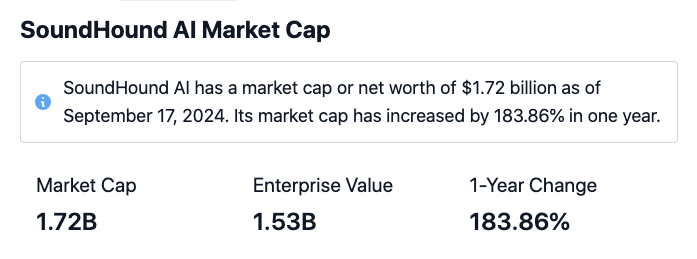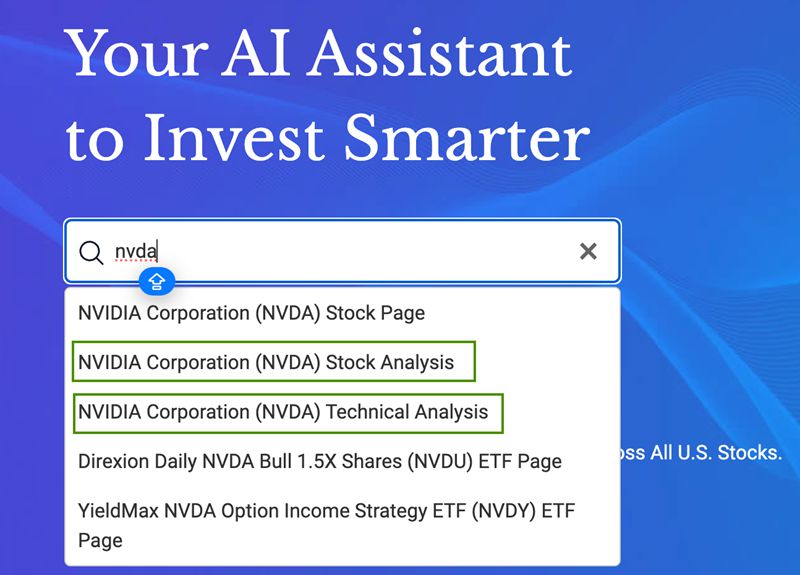The ability to customize strategies is an essential feature of AI stock predicting/analyzing trading platforms, as it allows users to adapt the platform to their own specific goals in trading and risk tolerance as well as market conditions. Platforms that have powerful customization capabilities will increase the efficiency of your trading. Here are the 10 best suggestions for evaluating the customization options available on these platforms.
1. Evaluate Pre-Built Strategy Templates
The variety of templates available: Find out whether the platform has an array of pre-designed strategies that can be used for various trading styles (e.g., day trading, swing trading, and long-term investing).
Easy to use: Check the ease with which you can apply and modify these templates to meet your requirements.
Performance history: Determine whether the platform offers historical performance data for pre-built strategies.
2. Assessment Custom Strategy
Drag-anddrop tools: Look out for platforms that have intuitive drag and drop interfaces to allow you to personalize strategies.
Coding options: Check whether the platform supports custom-made coding (e.g., Python, R or other proprietary scripting languages) for advanced users.
Flexibility: Make sure the platform permits you to establish entry/exit rules and risk management guidelines, as well as other important elements of your strategy.
3. Check for Backtesting Capabilities
Historical data: Check whether your platform has enough historical data for testing strategies for backtesting.
Customizable settings: Be sure that you are able to change parameters during backtesting.
Performance metrics - Make sure to see if the platform offers detailed indicators of performance (e.g. the win rate, Sharpe coefficient, or drawdown) for all strategies that have been backtested.
4. Evaluate Real-Time Strategy Testing
Paper trading: Ensure that the platform offers paper trading or simulation modes to test strategies in real-time without the risk of losing capital.
Live testing: Check whether you can test strategies on live markets using very little capital to evaluate their performance.
Real-time Adjustments: Determine if you're able to adjust your settings in real time, based upon market conditions.
5. Integrate Integration and Technical Indicators
Libraries of indicators: Ensure that the platform has a full toolkit for technical analysis (e.g. MACD, RSI and moving averages).
Custom indicators: You should be able to develop or import your own indicators which you can utilize in your strategy.
Check the combination of indicators.
6. Check for Risk Management Tools
Stop-loss/take-profit: Ensure the platform allows you to set stop-loss and take-profit levels within your strategies.
Size of your position - Check for any rules you can use (e.g. an amount fixed or a percentage of your portfolio) to manage the risk.
Risk-reward: Find out if your platform permits you to define risk-rewards for each strategy or trade.
7. Evaluate Multi-Asset Strategy Support
Asset classes: Check that the platform can handle different asset classes, such as stocks, ETFs and options.
Cross-asset Strategies: Examine whether it is feasible to devise strategies that blend various asset classes.
Market coverage. Make sure the platform includes the markets that you are interested in (e.g. US international, cryptocurrencies).
8. Evaluate the automation and Execution
Automated Trading: Check whether the platform is able to implement strategies in a way that is automated using pre-defined rules.
Types of orders: Ensure that the platform is able to execute various types of orders like market, limit and stop.
Latency: Make sure that the platform has a low latency when trading, particularly if you are using high-frequency strategies.
9. Look for tools to optimize your strategy.
Optimization of parameters - Make sure that your platform comes with tools to optimize the strategy's parameters.
Machine learning integration. Check whether your platform supports machine learning capabilities to enhance and improve strategies.
Scenario analysis: Verify that the platform has the ability to test strategies in different market conditions (e.g. volatile bull, volatile, or bear).
Review User Feedback and Community Support
User feedback: Use user feedback to evaluate the efficiency of the platform in determining customizing strategies.
Community forums - Check to see if the platform has a community which is active and where users can share their own strategies.
Support resources: Ensure that the platform offers tutorials, webinars, or documents to help users create and improve their strategies.
Bonus Tips:
Trial period: Take advantage of a free trial or demo to test the platform's strategy options for customization.
Scalability: Make sure the platform you choose to use can deal with complex strategies that evolve as you trade.
Customer support: Check for assistance for questions related to strategy or issues.
These guidelines will assist you assess the options for customization of AI trading platforms which analyze and predict the market. In this way you'll be able select one that is compatible with your trading goals, and lets you improve and implement your strategies. A platform that has robust customization features can enable you to adjust to changes in market conditions and boost the efficiency of your trading. Check out the top rated my explanation about investing ai for site info including ai bot for copyright trading, ai stock predictions, best ai for stock trading, ai stocks to invest in, ai investing app, ai copyright trading, ai for stock trading, trade ai, trading ai, best copyright prediction site and more.

Top 10 Tips To Evaluate Social And Community Features On Ai Technology For Predicting And Analysing Trading Platforms
Understanding how people communicate, interact, and grow is vital to comprehending the AI-driven trading and stock prediction platforms. These features can boost the user's experience and provide useful aid. Here are 10 tips for evaluating the social and community aspects of these platforms.
1. Active User Communities
Tips: Ensure that the platform is actively used and has users who are involved in discussion, sharing information or offering feedback.
Why: A community that is vibrant is a place where members can develop and share knowledge.
2. Discussion Boards and Forums
Tips: Assess the level of activity and quality of discussion forums or message boards.
Forums allow members to talk about market trends as well as ask questions and share strategies.
3. Social Media Integration
Tips: Check if the platform is integrated with social media platforms (e.g., Twitter, LinkedIn) to share insights and information.
Why social media integration can boost engagement and give actual time market information.
4. User-Generated content
Search for features that permit users to share and create content. Examples include articles, blogs, or trading strategies.
Why: User-generated material fosters collaboration, as well as providing diverse perspectives.
5. Expert Contributions
See if any experts from the industry such as market analysts or AI experts, have contributed to the project.
Why: Expert perspectives add credibility and depth to the community debate.
6. Real-time chat and messaging
Check if there are any instant messaging or chat functions which allow users to chat instantaneously.
Reason: Real-time communication allows rapid information exchange and collaboration.
7. Community Moderation Assistance
TIP: Check the level of support and moderation in the community (e.g. moderators, moderators, support staff, etc.).
Why: Effective moderating ensures that a respectful and positive atmosphere is maintained, while customer support helps resolve issues quickly.
8. Webinars and events
Tip: See whether your platform offers Q&A sessions, live sessions or webinars.
What are they: They provide professionals from the industry with an opportunity to network with fellow participants and gain knowledge from them.
9. User Feedback and Reviews
Tip: Look for features that let users write reviews or feedback about the site and its community features.
The reason: Feedback from users is utilized to pinpoint strengths and areas of improvement in the community ecosystem.
10. Gamification of Rewards
Tip - Check to see whether your platform supports gamification (e.g. badges, leaderboards) or rewards that are offered in exchange for participation.
Gamification can be a powerful method to increase engagement of users in the online community.
Bonus Tip: Privacy and Security
Ensure that the community and social functions have strong security and privacy measures to protect user data and interactions.
When you look at these aspects by evaluating these factors, you can determine whether an AI-based stock forecasting and trading platform provides positive community that will improve the experience of trading. Take a look at the best this hyperlink about trade ai for more recommendations including ai day trading, ai stock trader, ai trader, stocks ai, investing in ai stocks, ai stock trading, investment ai, ai stock trading, best ai stocks to buy now, incite and more.
